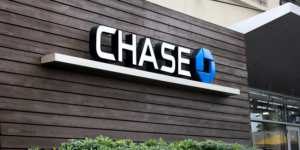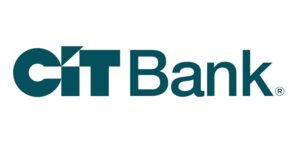
Credit card fraud has become bigger and bigger with the innovation of new technology. So much so, that not even debit card are immune to being stolen. The Federal Trade Commission reported 157,688 cases of credit card fraud in 2018 alone, which was a major increase since 2014 and represented the largest category of reported identity theft. This is why it is important to know the signs and the riskiest places to use your credit card so that you can be prepared.
ATM Machines
Criminals have been skimming credit and debit card information from ATMs for years no, and the innovation of chip cards was partly made to fix this problem. As the credit card industry matures, though, thieves have adapted, according to Consumer Reports, to have “shimmers” which can read chip-based cards.
Gas Stations
In the same manner that criminals skim credit and debit card information through the devices that scans your card, the same thing can be set up at a gas station. With pumps seeing a lot of customers and often receiving minimal supervision, criminals can easily set up their skimmers and sometimes tiny cameras that can capture PIN numbers. The problem is so bad that the Secret Service got involved. The agency found nearly 200 skimmers at 400 gas stations during an investigation in 2018.
Mobile Vendors
A channel that people are more cautious about, mobile vendors are criminals who pose as trustworthy vendors and try to scam you. Popular locations for these criminals will be at festivals, concerts, fairs, and other events. Attendees may not know whether a vendor is legit or uses a card skimmer unknowingly. This can leave your card vulnerable.
Dining Establishments
While some restaurants now swipe your card in a visible location, many still run cards in the back of the house where you can’t see it. Should an establishment or individual server be unscrupulous, they could swipe your card through a skimmer and charge more than just your meal.
Chain Retailers
Large retailers that have multiple locations may seem like a safe place to use your credit card because you’ve probably been with them for a long time or you think they have more resources to invest in this type of security. The number of people who swipe cards at retailers often make them major targets for thieves. More recently, Target, T. J. Maxx and Mashall’s have had data breaches involving cards.
On top of physical stores having issues with security, online retailers have had the same problems. An online transaction can leave your credit card information exposed at multiple points. The information on you mobile device can be potentially stolen by malware if you aren’t careful using the internet. This could happen when a criminal intercepts the transmission or through a data breach from the vendor you are trying to buy from.
How To Protect Your Credit Card
With so many potential ways your credit card information can be compromised, you likely can’t eliminate the threat of credit and debit card theft altogether. There are steps you can take to better protect your card information, though.
Use a Very Visible ATM
While any ATM can hold a skimmer, generally the ones that are not monitored as well are the ones that may have a skimmer installed. However, if you simply use an ATM that is in clear view of the public, the chances of it having a skimmer goes down. So, go for a high-traffic and highly visible machine, preferably one that is in a secure location, such as a bank.
Check Readers at Gas Stations
Whenever you use a credit card at a gas station, quickly check the pump’s reader to see if it has been messed with. If there are any odd stickers, or if the inspection seal reads void or if there are any loose parts, your best bet is to pay inside. That way, your credit card won’t be in danger.
Vet Mobile Vendors
To make sure a mobile vendor is legit, be sure to vet them before you pay with your credit card. This means ask them them where they’re located, check for pictures of their facility and look them up online. This will at least ensure that you are making a payment to a real business and not someone who is just posing as a local or mobile vendor.
Carry Cash With You
Although carrying cash has nearly become a thing of the past with the use of cards and mobile payments, it’s always a good idea to carry cash on you in case you only have to make a small transaction. This could be for an establishment or a fuel pump that looks suspicious and paying with cash means you don’t lose more than you put down.
Don’t Store Card Information
Technology nowadays has made it easier to make credit card payments on mobile devices. But just like we mentioned above, not everything is perfect and there will be loopholes that criminals will exploit to steal your information. To minimize the risk of your data being stolen from your phone, laptop, tablet, etc. try not to save your card information on there.
Use a Credit Card Instead of a Debit Card
When you do use a card, try to use your credit card because they are much easier to dispute since it runs on credit instead of your actual funds. Because a debit card runs on funds, it is much harder to dispute fraud charges with your card issuer.
What To Do If Your Credit Card Is Skimmed
If you do notice on your bank statements or account that there are suspicious charges, then that means your information might have been stolen. If this is this case, there are three simple steps you can follow to address the problem.
Step 1: Notify Your Card Issuer Immediately
As soon as you think that your credit card or debit card information has been compromised, notify your card issuer to get them working on resolving the issue. According to the Federal Trade Commission, you have no liability if you report the incident before fraudulent charges are made. If you report the fraudulent charges after they are made, the amount you’re responsible for depends on how quickly you tell your card issuer. Since most issuer have 24/7 numbers, you can call as soon as you think a card’s information has been stolen.
Step 2: Give Your Card Issuer a Written Statement
Follow up on your initial notification with a written statement that you send to your card issuer. This will simply document that you did indeed contact the issuer, should a question arise about how you handled the incident. To prove you sent the letter, send it via certified mail with a return receipt requested and keep a copy for yourself.
Step 3: Receive a New Card and Set a New PIN
Once you have notified your card issuer about the issue, they most likely shut down your card and send you a new one in the mail. How long this takes will depend on the issuer and your situation. Wait for your card to come in and make sure you set a new, different PIN for it. This to help criminals from trying to steal your information again.
Step 4: Monitor Your Account Statements
Even if you have your new card, you aren’t entirely in the clear yet because you don’t know how much personal information the criminal stole. If they have access to your personal information, then they may be able to get into your bank account even though you have a new card. Constantly monitoring your account even after you get your new card will make sure it is completely safe.
 |
 |
Bottom Line
Credit card and debit card theft has become more prevalent with the innovation of new technologies. Some of the biggest tools that criminals use to do these crimes are skimmers that are placed on things that you’re used to swiping your card on. Additionally, frauds trying to pose as mobile vendors have become a bigger issue. It has become such a problem that even government organizations have stepped in to try and resolve these problems. However, as long as you follow some of our tips above, you can lower your chances of becoming a victim to these crimes. For more posts like this, check out our list of bank guides!




Leave a Reply